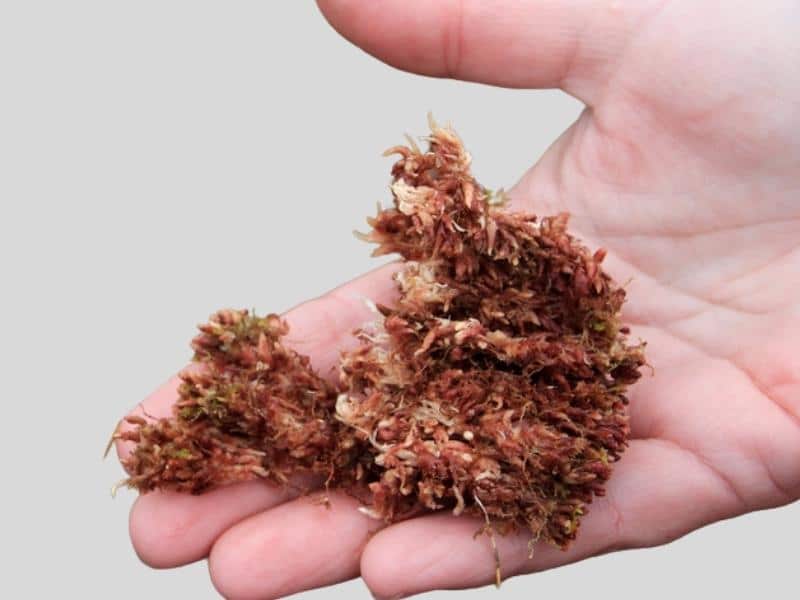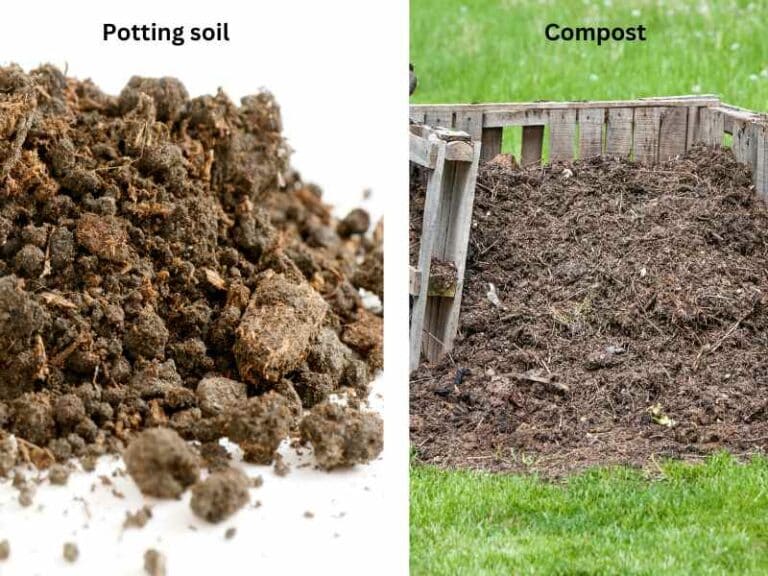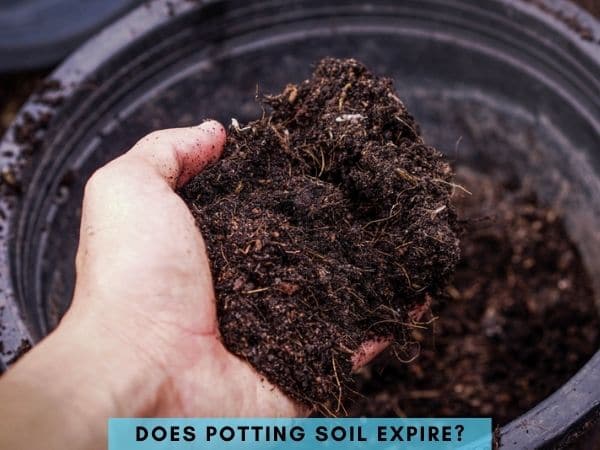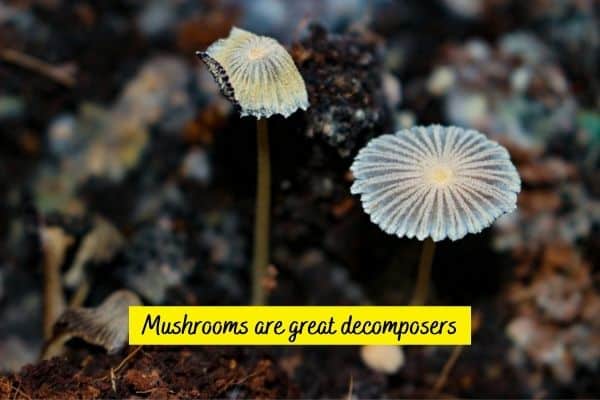Sphagnum Moss vs Peat Moss – Differences and Uses
There’s often confusion when it comes to differentiating sphagnum moss from peat moss perhaps because they’re two different forms of the same plant. Approximately 380 species of sphagnum moss are in existence. Commercial sphagnum moss products grow in wetlands such as marshlands, peat bogs, and heath and moorland.
Mass harvesting of sphagnum and peat moss occurs in Canada, Ireland, Michigan, and Scotland. They are also harvested in New Zealand and Peru.
I’ve explained – in detail – the properties and uses of sphagnum moss and peat moss to help you differentiate the two and decide which one you need.
Are sphagnum and peat moss the same?
Sphagnum moss and peat moss are not the same. Although they come from the same plant, they have varying properties and uses. They are found in swampy places, but sphagnum is the living part exposed above the surface while peat is part of the bog submerged underwater. Therefore, sphagnum moss is pure and peat moss contains a lot of decayed matter.
Even their modes of harvesting are different. Harvesting peat involves temporarily drying the bog and sucking it up with vacuums. Afterward, firms dry them again, screen them, and compress the peat into bales of peat moss. Unlike sphagnum moss, which is often used as a liner for hanging baskets, peat moss is essential for amending soil.
Sphagnum moss properties

Sphagnum moss is the only living genus of the Sphagnaceae family. The plant grows in thick, dense clumps in wet and boggy areas. On rare occasions, you will find it growing in small patches.
The tiny and sometimes slightly toothed leaves of sphagnum moss grow close to the stem. Their leaves form green hair-like tufts, which can appear brown, deep red, pink, or yellow in some sphagnum species.
Unlike peat moss, sphagnum moss is not submerged. It emerges on the bog or swamp surface. The plant likes wet climates like those in New Zealand. However, sphagnum moss is threatened by unsustainable harvesting practices. For instance, one vacuum harvester sucks about 100 acres of moss per day, yet it takes five to six years for the bogs to regenerate.
Here are the properties of sphagnum moss:
- Sphagnum moss does not grow in alkaline media. Generally, you won’t find them in water that contains lime. The plant likes acidic soils and therefore thrives in low pH areas.
- They occur mostly in the Northern Hemisphere in moist tundra areas, conifer forests, and peat bogs
- Sphagnum moss is made purely of living moss material. The plant’s leaves have cells with chlorophyll, making them capable of photosynthesis.
- They have shallow roots with discernible plant parts. In other words, you can see and distinguish the stems from the branches and leaves.
- Sphagnum reproduces asexually through fragmentation. The mature plant splits into tiny fragments that grow individually as clones of the original moss.
Uses of sphagnum moss
- Used as a seed starter and to propagate plants
- Used to line baskets and other art projects
- sphagnum moss holds lots of water in its capillaries and helps retain humidity in the soil
Peat moss properties

Peat moss occurs below the water in bogs. It is made up of decomposed sphagnum moss, organic matter, and plant materials, formed over thousands of years. Since its harvesting is similar to mining, the University of Vermont Extension, department of plant and soil science, refers to peat moss as a natural resource.
Although Russia has the largest amounts of peatland in the world, most of the peat moss in the United States comes from Canada’s vast Sphagnum moss area. Because it takes thousands of years for peat moss to form, the harvesting is done after an environmental impact analysis. Therefore, peat moss is harvested in a sustainable manner.
Unlike compost, peat moss is more expensive because of the harvesting mechanisms and shipping expenses.
Here are the properties of peat moss:
- The composition of peat moss is uniform
- It has a low pH between 3.0 and 4.0. Thus, peat moss is ideal for growing acid-loving plants like camellias and blueberries.
- Contains few microorganisms
- Peat moss is completely sterile. It contains no harmful elements like weed seeds or pathogens
- Peat moss does not suppress diseases
- Initially, peat moss takes a lot of time to get wet. Re-wetting it once it dries out can also be pretty hard.
Uses of peat moss
- Peat moss has a high water-holding capacity. Therefore, it’s essential for gardening as it retains more humidity in sandy soils.
- Unlike compost, peat moss does not compact. Therefore, you can add it to your potting soil to improve aeration.
- Peat moss increases the soil’s nutrient-holding capacity through cation exchange capacity (CEC).
- You can use it to manage your soil’s pH by neutralizing excess alkalinity. When growing a plant that thrives in acidic soil, add peat moss to the potting soil.
- Helps to filter out contaminants and lower the pH in an aquarium.
- You can use peat moss as a mulch
- Although a little out of context, peat bog’s anaerobic and acidic conditions could preserve plant fragments, human bodies, hair, and clothes for millenia. An example is the Tollund man.
Sphagnum vs Peat Moss – Differences
Although sphagnum and peat moss occur in the same area, they have several differences. The differences can be noticed in their properties, mode of harvesting and packaging, and uses.
Here are some of the differences between sphagnum and peat moss:
Distinguishable parts
Sphagnum moss has distinguishable plant parts such as leaves and stems. However, peat moss’s plant parts are more decomposed and fine-textured, so it is difficult to distinguish in the bog.
pH
Sphagnum moss has a neutral pH while peat moss has a low pH ranging between 3.0 and 4.0, making it acidic. Peat is ideal for growing acid-loving plants like camellias and blueberries. Therefore, it is important to test your soil pH before purchasing sphagnum or peat moss.
Regeneration
After harvesting, sphagnum moss regenerates after five or six years. On the other hand, peat moss regenerates after thousands of years.
Usage
Sphagnum moss is a great seed starter and is also commonly used to propagate plants. But peat moss is ideal for amending gardening soil. For instance, you can use peat moss to give hard clay – like that in Georgia – a crumbly texture, so it can support most plants.
Exposure and content
Sphagnum mosses are exposed on the surface of the soil or wetlands. On the contrary, peat mosses are submerged. In its natural state, peat moss is very hydrated. It contains up to 70% of water.
Life status
Sphagnum moss is a living material whereas peat moss contains decaying organic matter. The dead materials in peat may include sphagnum moss materials and dead insects.
Which one is better?
The better option between sphagnum moss and peat moss depends on your circumstances. For example, if you want to improve soil drainage, sphagnum moss is the best. Besides, peat moss comes from sphagnum moss. But if you want to start seeds or introduce potted plants in your home, peat moss is the best.
Peat moss is also an appropriate growth medium for acid-loving plants. For example, if you want your hydrangea to bloom blue flowers instead of the usual pink flowers, grow the plant in peat moss. If you have alkaline soil, the low pH of peat moss will release more aluminum into the soil to give you beautiful blue flowers.
Here is a table summarizing the differences between sphagnum moss and peat moss:
| Sphagnum moss | Peat moss |
| Sphagnum moss is suitable for starting seeds and propagating plants. | Peat moss is ideal for amending gardening soil. |
| After harvesting, sphagnum bogs regenerate after five to six years. | Peat forms naturally after thousands of years. |
| The plant has a neutral pH. | Peat is acidic, with a pH between 3.0 and 4.0. |
| You can easily discern the plant parts in sphagnum moss. | Peat moss components are more decomposed and fine-textured. |
| Sphagnum moss emerges on the top of the bog or swamp surface. | Peat moss is submerged below the swamp and is water-saturated (up to 70% hydrated). |
| Sphagnum moss is made purely of living and moss material. | Peat contains a mix of decaying organic matter including moss, dead insects, decaying plant materials. |
References
- University of Vermont Extension. (2022). What is Peat Moss? Department of Plant and Soil Science.
- Vassar College. (2017). Tollund Man: Peat Bogs Today and in the Iron Age. Real Archaeology.






